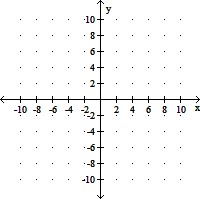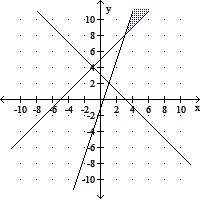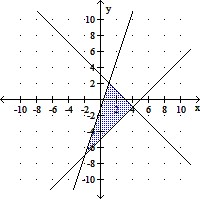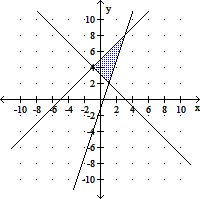(a) Find the quotient q and remainder r for f =  and write f in the form f = q +
and write f in the form f = q +  . (b) Then state the end behavior model for f. f(x) =
. (b) Then state the end behavior model for f. f(x) = 
A. (a) f(x) = x2 - 8x + 31 + 
(b) q(x) = x2 - 8x + 31
B. (a) f(x) = x2 + x - 5 + 
(b) q(x) = x2 + x - 5
C. (a) f(x) = x2 - 8x + 31 + 
(b) q(x) = x2 - 8x + 31
D. (a) f(x) = x2 + x - 5 + 
(b) q(x) = x2 + x - 5
Answer: D
You might also like to view...
Find the domain and range and describe the level curves for the function f(x,y).f(x, y) = ln (3x + 9y)
A. Domain: all points in the xy-plane satisfying 3x + 9y > 0; range: real numbers z ? 0; level curves: lines 
B. Domain: all points in the xy-plane; range: all real numbers; level curves: lines 
C. Domain: all points in the xy-plane satisfying 3x + 9y ? 0; range: all real numbers; level curves: lines 
D. Domain: all points in the xy-plane satisfying 3x + 9y > 0; range: all real numbers; level curves: lines 
Graph the solution of the system of linear inequalities.

A. 
B. 
C. 
D. 
Convert the polar equation to a rectangular equation.r = 
A. 9x2 + 8y2 + 6y - 9 = 0 B. 8x2 + 9y2 + 6x - 9 = 0 C. 9x2 + 9y2 + 6x - 9 = 0 D. 10x2 + 9y2 - 6x - 9 = 0
Verify the identity.csc  = sec x
= sec x
What will be an ideal response?